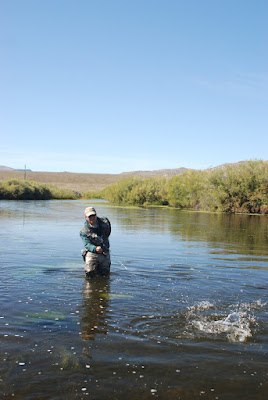 |
| Missouri River Near Fort Peck |
The Land and Water Conservation Fund was established by
Congress in 1964 to fulfill a bipartisan commitment to safeguard our natural
areas, water resources and cultural heritage, and to provide recreation
opportunities to all Americans. Using zero taxpayer dollars, the fund invests
earnings from offshore oil and gas leasing to help strengthen communities,
preserve our history and protect our national endowment of lands and waters.
The LWCF program can be divided into the State Side which provides grants to State and local
governments, and the Federal
Side which is used to acquire lands, waters, and interests therein
necessary to achieve the natural, cultural, wildlife, and recreation management
objectives of federal land management agencies.
 |
| Red Rocks Lakes National Wildlife Refuge |
Red Rock Lakes National Wildlife Refuge, a place where creeks flow freely, wildlife thrives and visitors can find solitude and astounding natural beauty is just one of many public lands that will adversely affected should Trump's proposal fly. Located in southwest Montana, the refuge is bounded by high mountains, wildflower filled meadows, grasslands, marshes and forests. This rich system nurtures many mammals, waterfowl, raptors, songbirds and a wide variety of fish. Sage grouse and native Arctic grayling live here as do grizzly bears, wolves and peregrine falcons.
 |
| LWCF has helped to procure 70% of Montana State Fishing Access Sites |
Since 1964, the LWCF has resulted in roughly $16 billion in spending nationwide, protecting everything from backcountry national forest lands to urban parks. Montana has received over $400 million in funding from LWCF. These funds have protected important lands in the Blackfoot Valley, on the Rocky Mountain Front, in the Greater Yellowstone region, and all over the state. LWCF funds have also been used to acquire key parcels that open up large areas of “land-locked” public land for hunting and fishing.
